Baptist
Middlefield, NY
Images
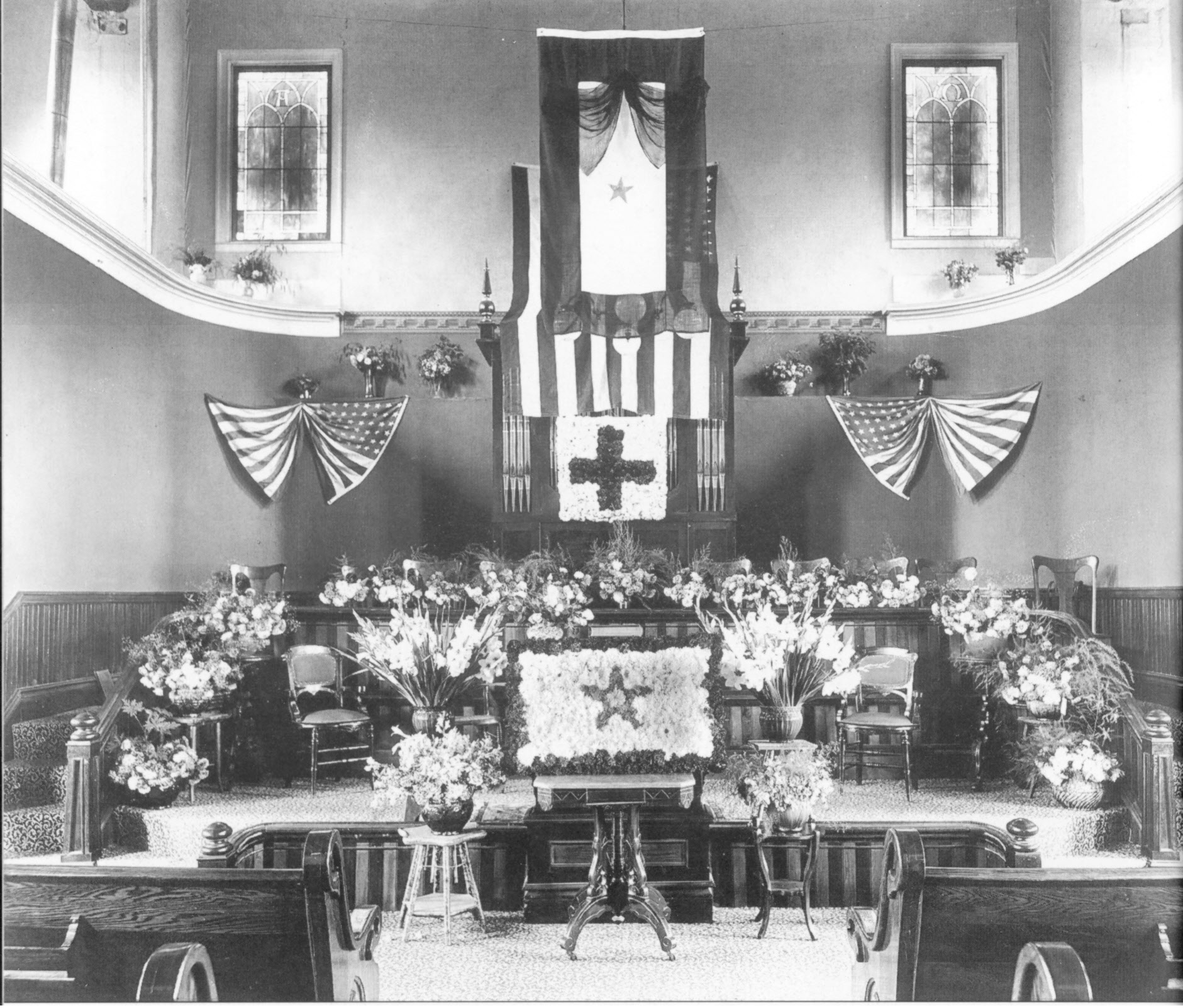 1918-08-18 - The church decorated for the funeral of young local boy killed in France in WWI (Photograph from an archival source: unknown, submitted by Scot Huntington/Scot Huntington)
1918-08-18 - The church decorated for the funeral of young local boy killed in France in WWI (Photograph from an archival source: unknown, submitted by Scot Huntington/Scot Huntington)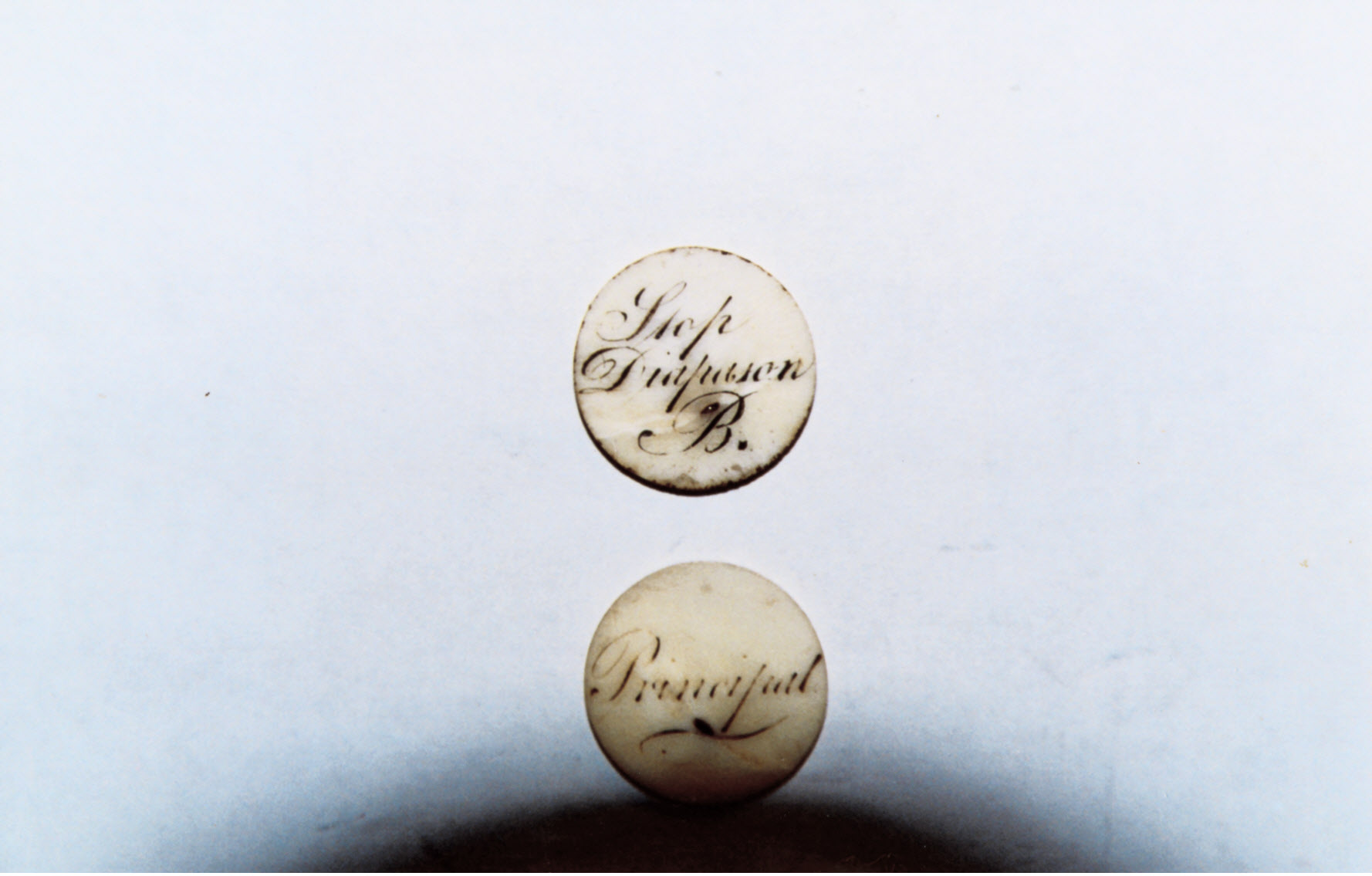 2006 - The two remaining original stop labels, kept inside the organ (Photograph by Scot Huntington/Scot Huntington)
2006 - The two remaining original stop labels, kept inside the organ (Photograph by Scot Huntington/Scot Huntington) 1909-07-08 - The first known image of the organ (Photograph from an archival source: unknown, submitted by Scot Huntington/Scot Huntington)
1909-07-08 - The first known image of the organ (Photograph from an archival source: unknown, submitted by Scot Huntington/Scot Huntington)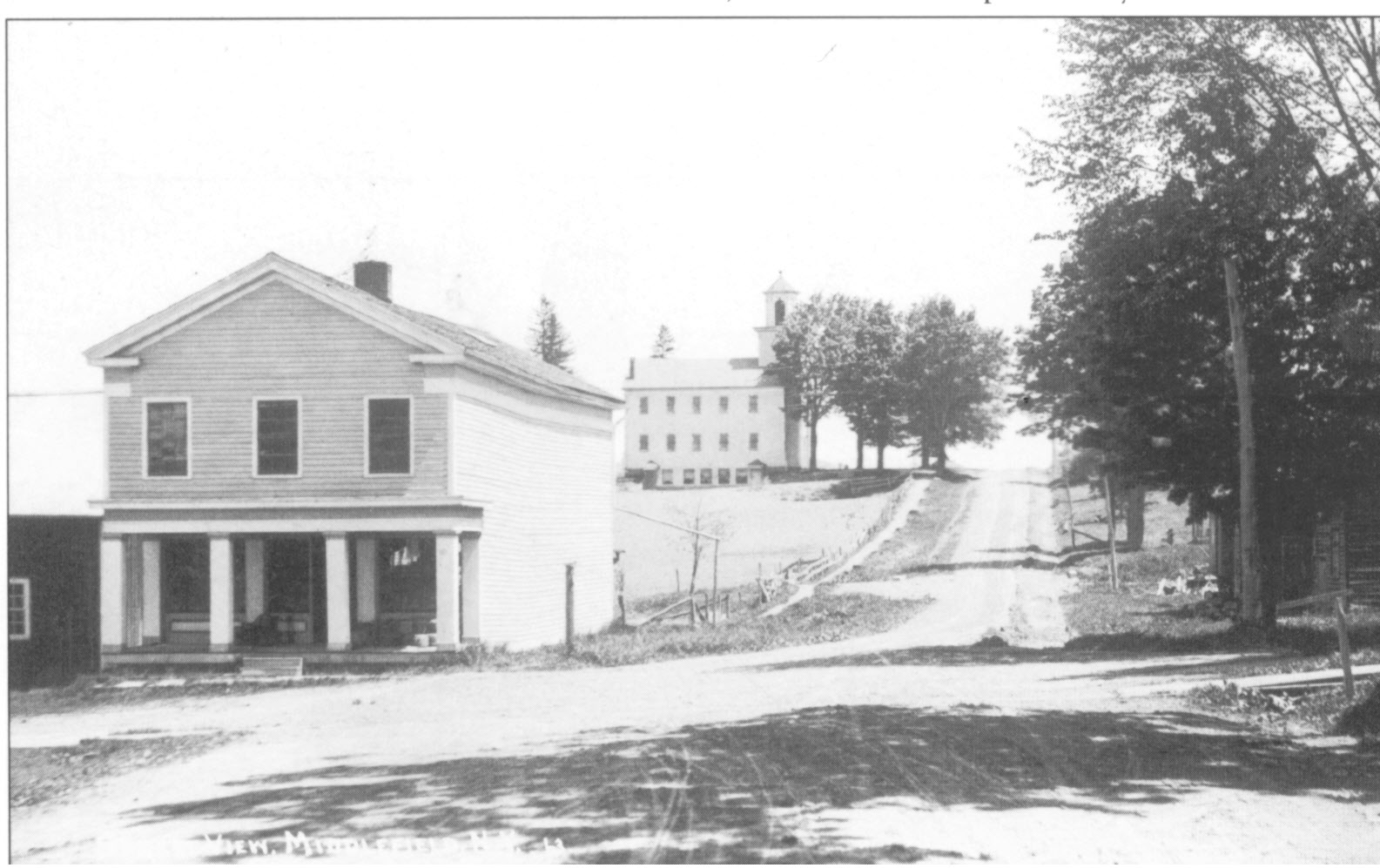 ca. 1900 - Church exterior as seen from the general store. (Photograph by unknown, courtesy of Scot Huntington/Scot Huntington)
ca. 1900 - Church exterior as seen from the general store. (Photograph by unknown, courtesy of Scot Huntington/Scot Huntington)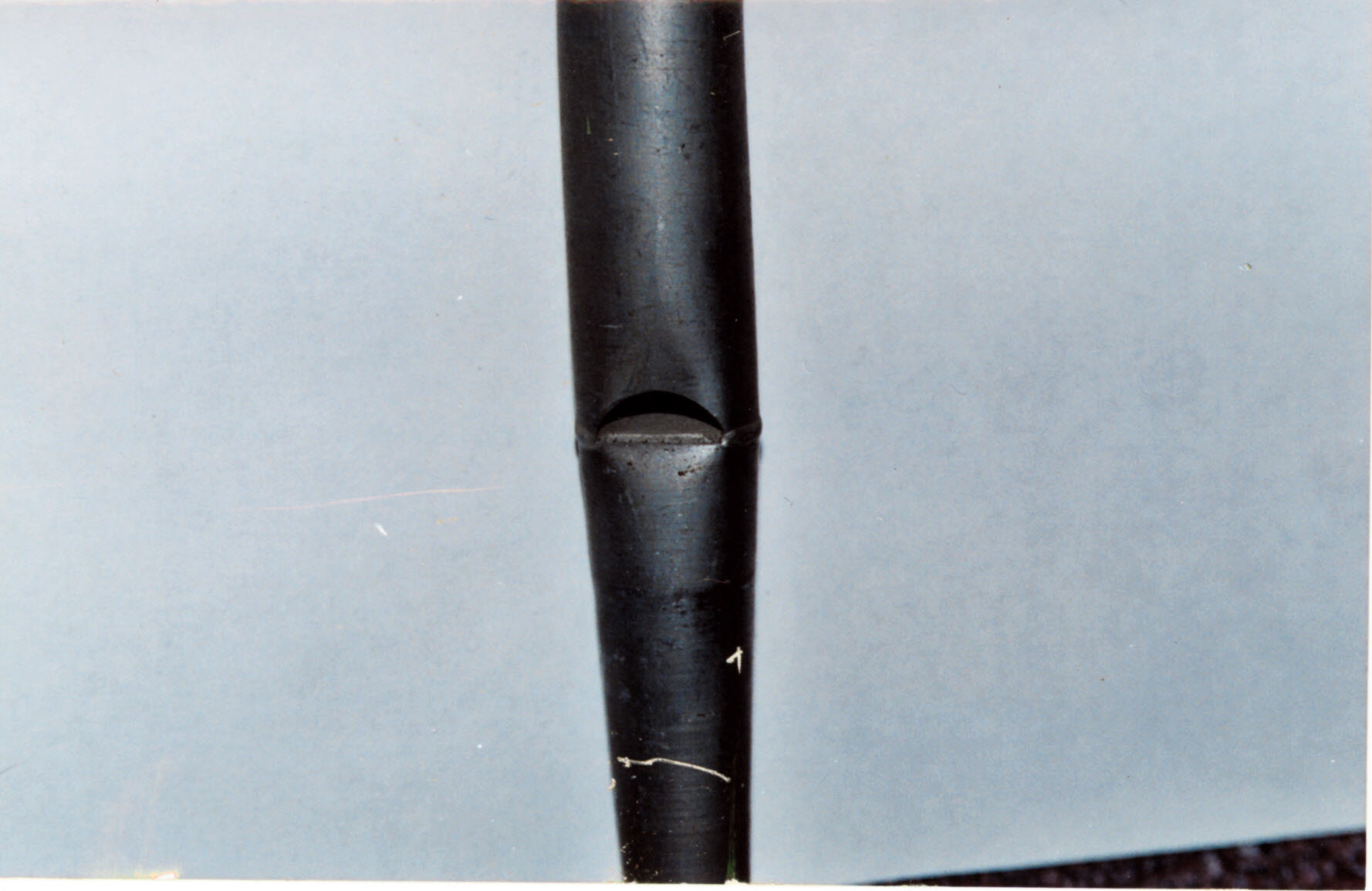 2006 - Middle-d of original Principal stop. Note unusual curved cut up (Photograph by Scot Huntington/Scot Huntington)
2006 - Middle-d of original Principal stop. Note unusual curved cut up (Photograph by Scot Huntington/Scot Huntington)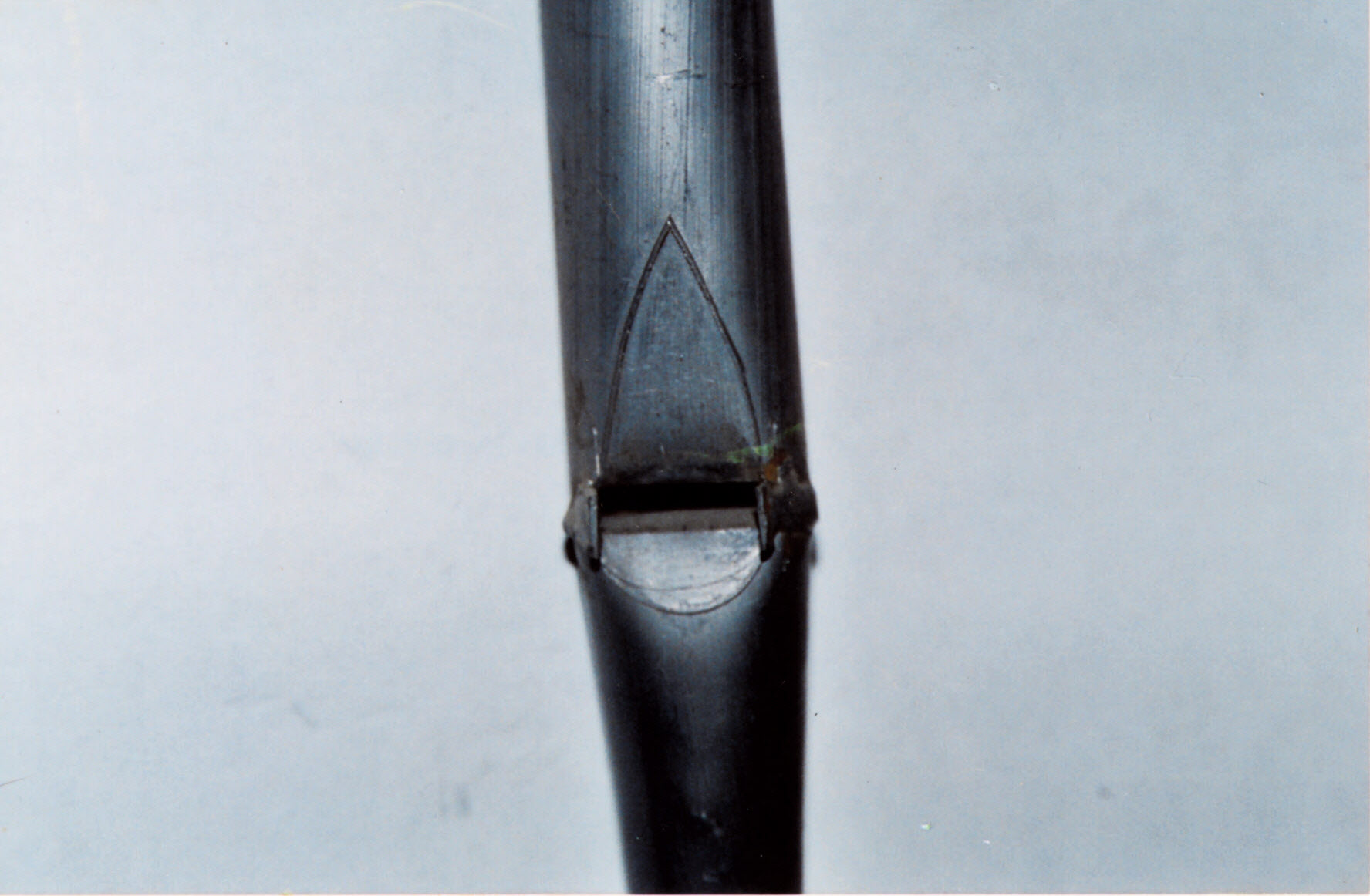 2006 - Middle-f of later Open Diapason (Photograph by Scot Huntington/Scot Huntington)
2006 - Middle-f of later Open Diapason (Photograph by Scot Huntington/Scot Huntington)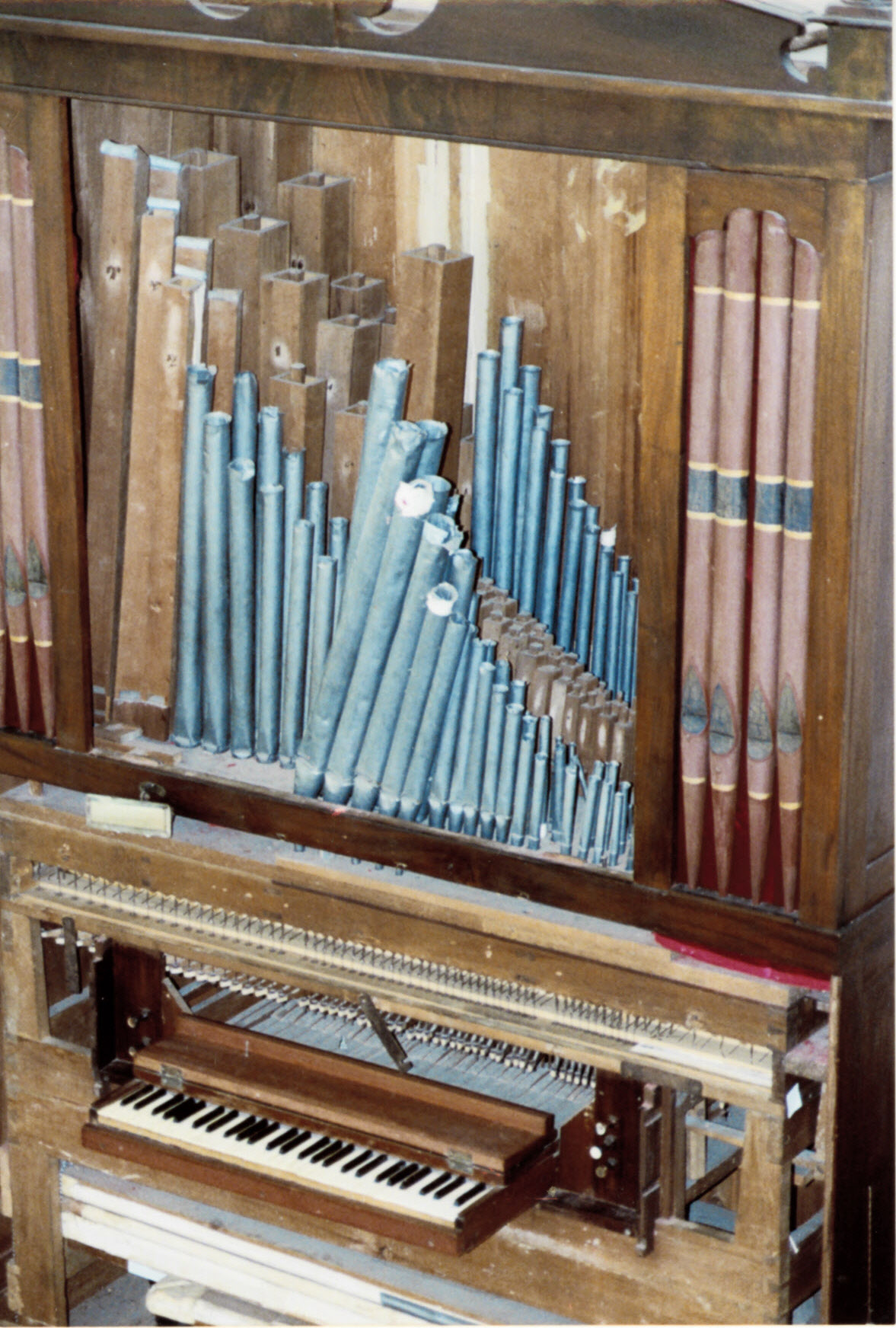 2006 - Interior pipework with facade removed. Note crude Open Diapason in front row, a later set of pipes to replace a missing stop (Photograph by Scot Huntington/Scot Huntington)
2006 - Interior pipework with facade removed. Note crude Open Diapason in front row, a later set of pipes to replace a missing stop (Photograph by Scot Huntington/Scot Huntington)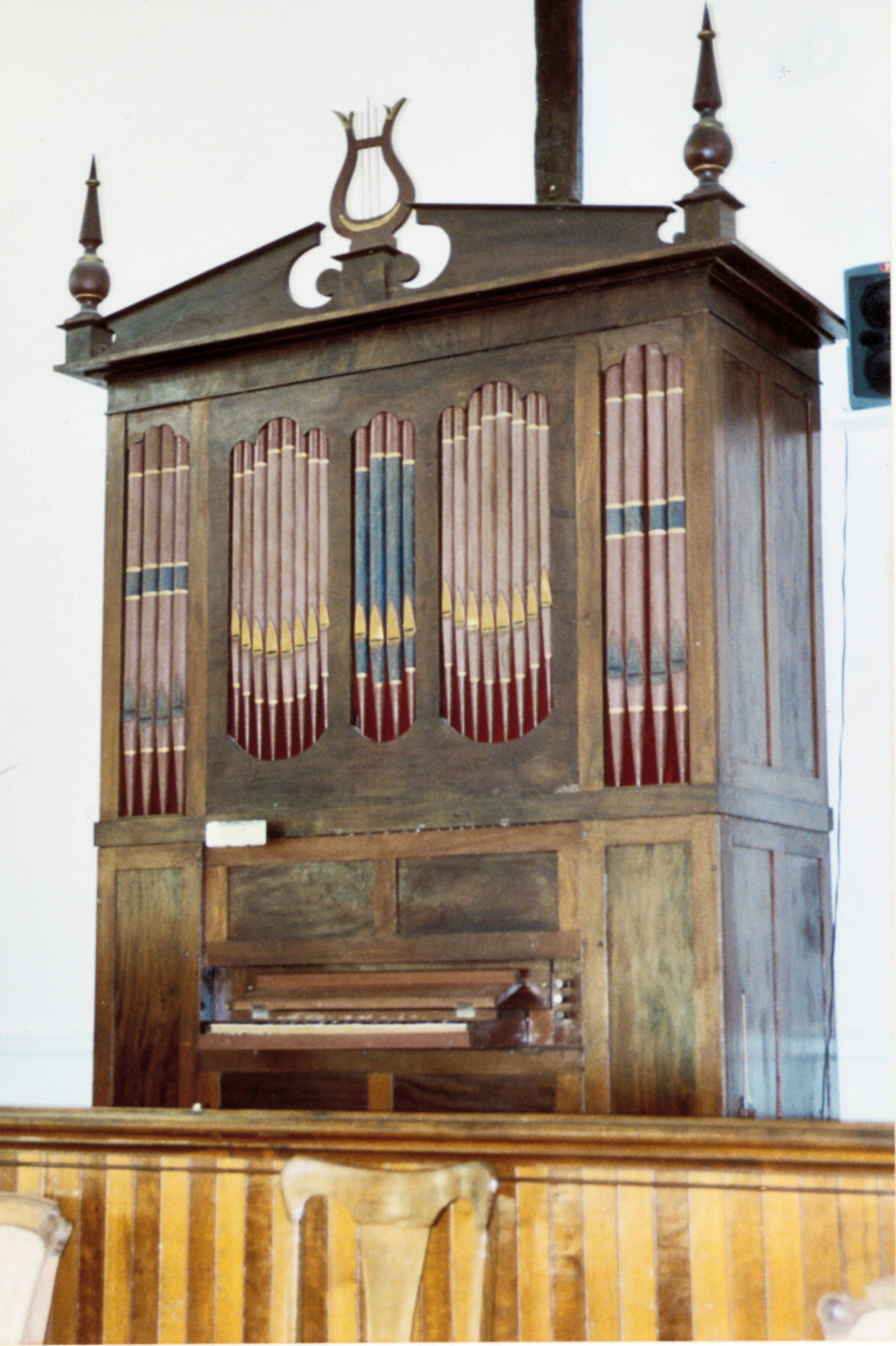 2006 - Organ case (Photograph by Scot Huntington/Scot Huntington)
2006 - Organ case (Photograph by Scot Huntington/Scot Huntington)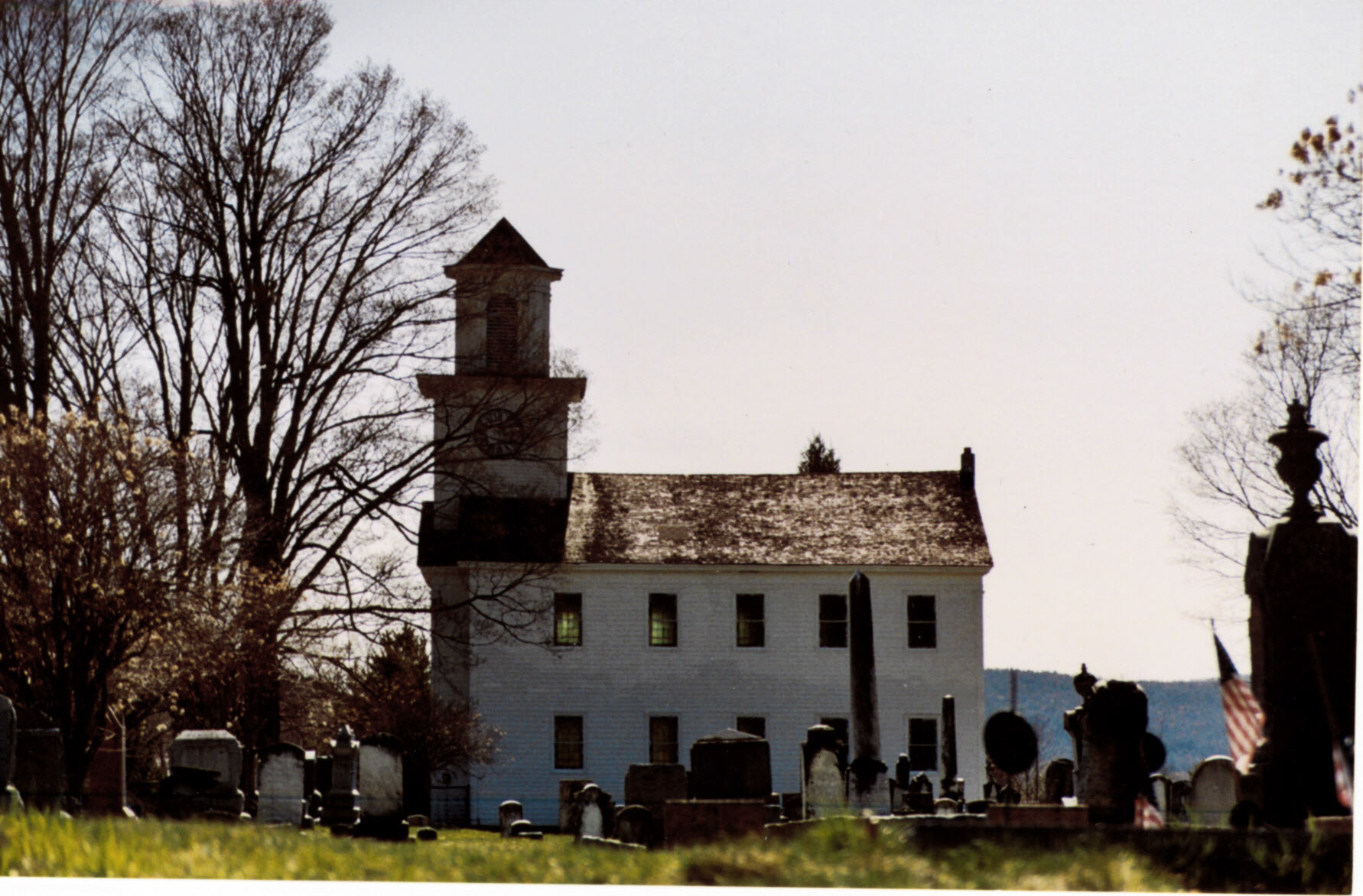 2006 - 1836 Middlefield Baptist exterior and historic burial ground (Photograph by Scot Huntington/Scot Huntington)
2006 - 1836 Middlefield Baptist exterior and historic burial ground (Photograph by Scot Huntington/Scot Huntington)
Consoles
Main
- 1 manuals
- Key action Type: Mechanical (Details Unknown)
Notes
2004-10-30 - Altered. -Database Manager
2021-10-26 - This organ is a riddle wrapped in an enigma. The organ as a whole is extremely old-- 1830 at least and likely a decade older-- but has been somewhat heavily and clumsily altered at some point in its distant past. The church has no extant records of its acquisition, but oral history places its arrival at some point between the 1890s and first decade of the 1900s. The oldest photo of the organ is 1909.
The Open Diapason is especially crudely made-- the pipes were rolled up inside out, many of the languids are installed upside down, and the solder seams are crude with evidence of the iron burning through the pipe. Obviously made by an inexperienced pipemaker, the pipes speak with difficulty and have poor tone. The metal pipes of the Dulciana and Principal are beautifully made, with an odd half-circle cut up that looks like the embouchure of a flute. They are bright and mildly articulate. The Stopt Diapason is the standard style of Anglo-American wood pipe construction of the era, also bright and mildly articulate. The Diapason is on the front toeboard, and its original stop action is labeled "Hautboy", but has been drilled for a two-rank mixture that was covered with a scab board to accept the Diapason. Poorly racked, the pipes lean heavily to the right. There is a blank toeboard between the Dulciana and Principal with former stop shank hole plugged in the jamb. Likewise, the conversion of the organ from G-compass to C-compass with a new keyboard, is similarly crude in its execution.
Silas Derrick left his Derrick & Felgemaker partnership in the late 1860s, and appears in Middlefield around 1874 with his family. where he bought a dairy farm and established an organ shop in nearby Cooperstown. The Derricks were members of this church and his daughter was married here. Circa 1900, Derrick and his wife transfered their membership to the Cooperstown Baptist church after moving into town, and Derrick died just a few years later. Could Derrick have been responsible for moving this organ here? The crude worksmanship defies the background of his training in Buffalo, but his activities in this geographic area make it almost a certainty. Thus the enigma.
The church is especially handsome. Plate number 27 in Asher Benjamin's 'The Country Assistant' [1797], the church is but little changed since it was built. Originally, the congregation faced the front door, [due east], and in certain seasons the sunlight pouring in the large Palladian window blinded the congregation, and at some point mid-century, the congregation turned around to face west, and it is after this change that the organ was installed. The church is serene in its almost Shakeresque colonial simplicity, and stepping through the door one is transported back in time.
The church's oral tradition has the organ coming from either nearby Springfield or Richfield Springs. Robert Rowland in a memoir published in the Tracker of organs he has known, mentions an organ in an episcopal church in Springfield that was the oldest he had ever seen, so that may rule out Springfield as the source. The pyramid stopper handles suggest a New York City maker, but otherwise, the organ could be the product of a local builder such as Phelps or Holt in Guilford, Wright in Utica, Pease in Cooperstown, or Redstone or Crabbe in New York City. It's too early to be an Andrews, and is not an instrument from the Hall/Erben line nor any New England builder. This is the oldest organ in Otsego County, and potentially the oldest native-built instrument in upstate New York. Seventy years ago this organ had several local siblings as old or older, sadly all lost to time in the 50s and 60s with this instrument as the lone survivor.
The organ is a candidate for a thorough museum-level conservation. During the course of such deconstruction, a thorough forensic exploration is needed to determine if this instrument is a pastiche of old parts assembled into a new whole mid- to late century, or an antique core subjected to clumsy alteration but intact in its broad strokes. -Scot Huntington
Stoplist
Source: Recorded during documentation visit May 2006
Unknown Builder (ca. 1830)
Baptist Church
Middlefield, New York
Compass: C-f 54 notes, no pedals;
G-compass windchest (65 notes) with unused channels in both bass and treble.
All stops have missing or non-original stop labels.
Stoplist is a transcription of the organ's contents.
Op. Diap [Treble] t.g. old, but not original
St. Diap Treble t.g. old, stopped wood
St. Diap Bass 1-19 old, stopped wood
Dulciana [Treble] t.g. old
Principal old, with open wood bass
Plugged stop hole empty toeboard, t.g. compass
Documents
Other Links
Regrettably, it is not possible to display the information about the sponsor of this pipeorgandatabase entry or if there is a sponsor. Please see About Sponsors on Pipe Organ Database.








